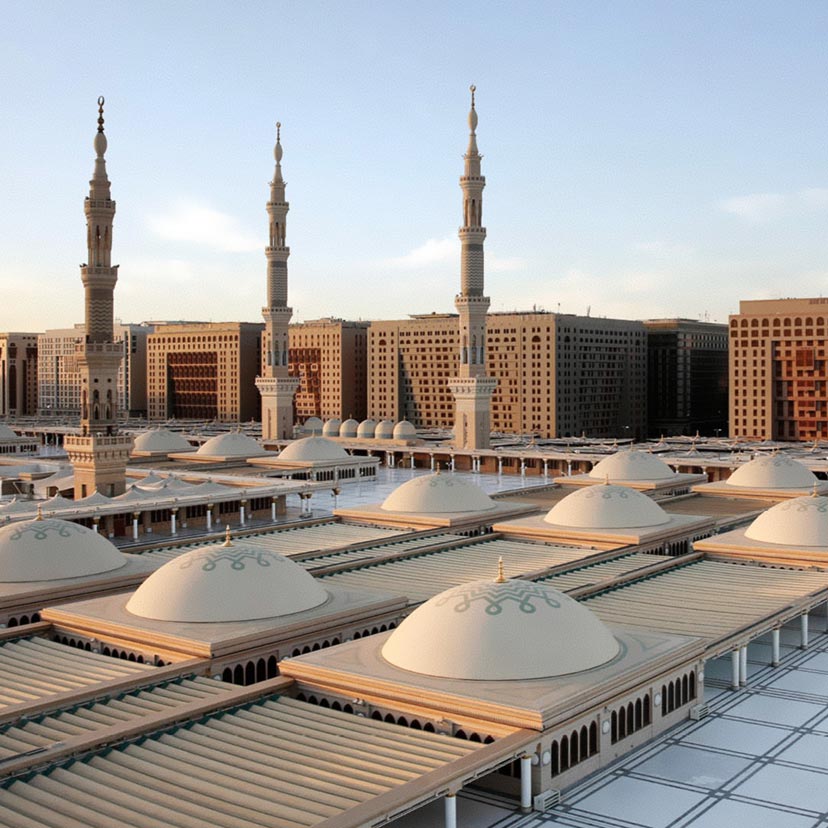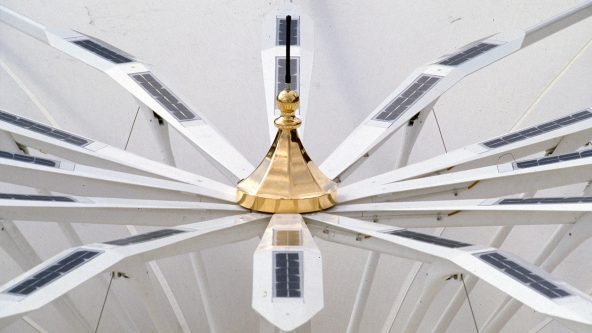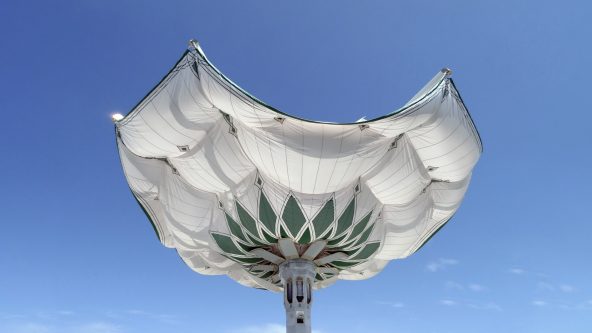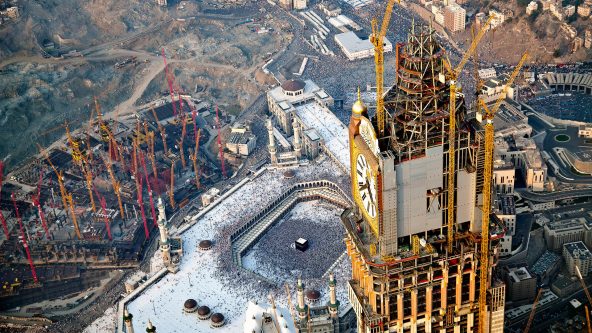
Sliding Domes
Movable hi-tech domes with a traditional character
The traditional architecture of the Prophet’s Mosque and the tomb of Muhammad is a magnificent complex of gleaming marble. The King himself laid the foundation stone for the second Saudi expansion: carried out between 1984 and 1994, it provides space for more than 280,000 worshippers. It includes 27 square inner courtyards that supply the huge halls of the new building with daylight and air. When their domes slide to the side after sunset, the heat escapes and cool air can collect during the night. During the day, the air-conditioned courtyards remain closed.
The domes SL Rasch developed for the new build project are moved aside by an integrated rail-mounted drive. Their form exhibits Moroccan influences and combines architectural tradition with state-of-the-art technology. The outer skin and inner shell of the domes are supported by a steel structure and utilise composites that had previously only been in used in aircraft construction.
The sandwich structure of the outer shell consists of carbon fibre/glass fibre epoxy laminate and hexagonal ceramic tiles. To ensure they could be accurately positioned on the domed outer surface, the pattern was cut into the prefabricated dome segments with CNC machines beforehand. The tiles were then laid in their designated recesses and laminated.
 Richly decorated interior
Richly decorated interior
The inside of the domes is decorated with hand-carved ornaments, some of them gilded and set with amazonite. Bodo Rasch purchased one of the last amazonite mines to avoid shortages.
The interior cladding of the domes is made of wood/epoxy laminate with maple veneer panelling. It was decorated with hand-carved cedar ornaments made in Morocco, some of them gilded and set with amazonite. The dome segments were prepared and packed in Germany, shipped to Medina and mounted on the flat roof of the mosque in park position.
The combination of traditional craftsmanship and industrial production, paired with innovative CAD technology, earned the project the Best Innovation award of the Houston-based International Association for Automation and Robotics in Construction (IAARC). The project also won the Abdullatif Al Fozan Award for Mosque Architecture in 2014.


 Innovative mechanism
Innovative mechanism
The guide rails for the sliding domes are attached to the continuous architraves. There are two wheel housings each on the opposite sides of the basic frame. Each wheel has its own electric drive, allowing the domes to be opened or closed within a minute.








